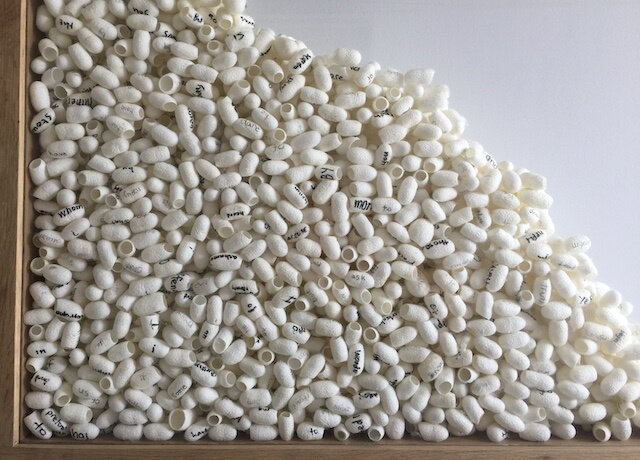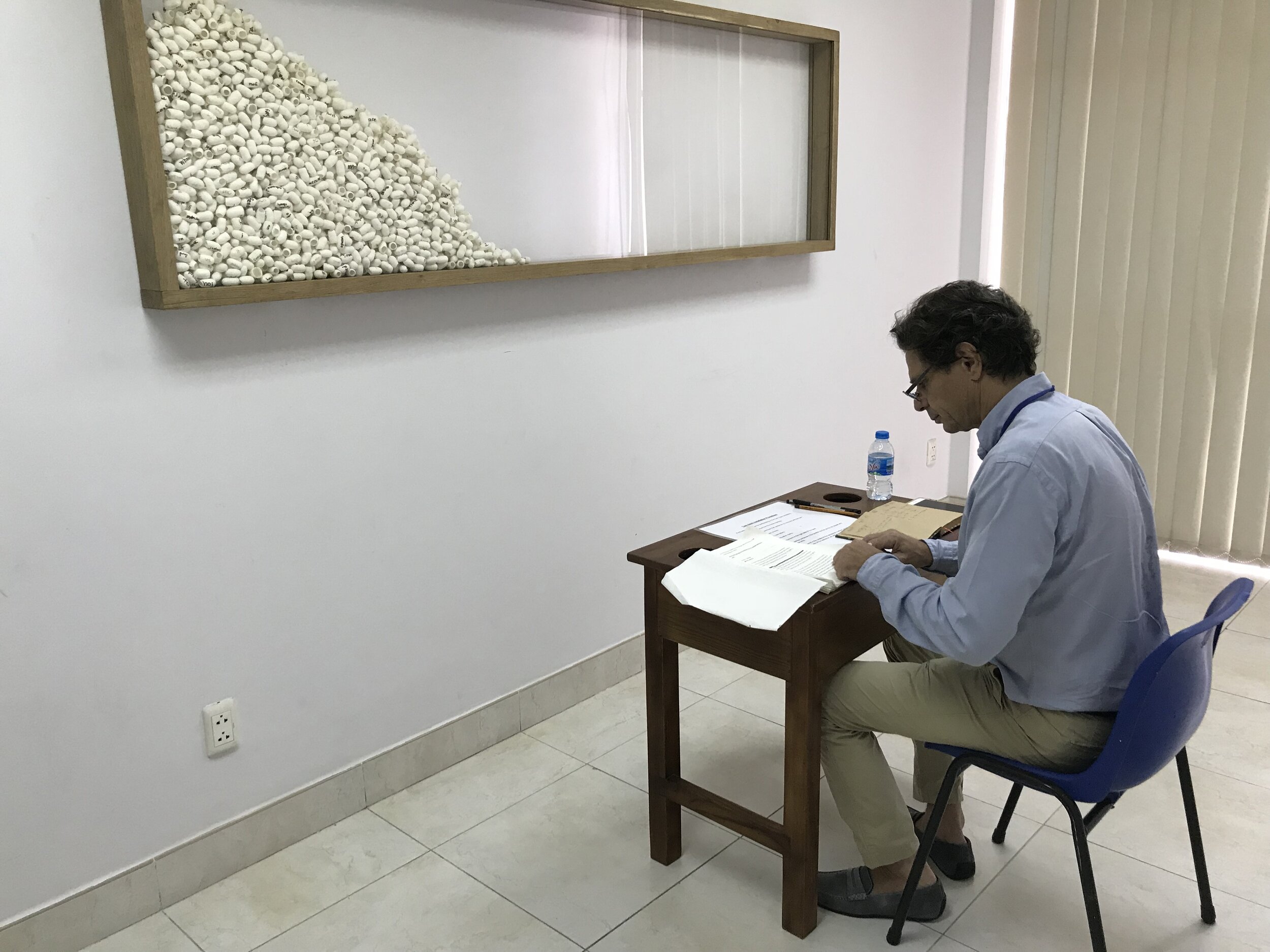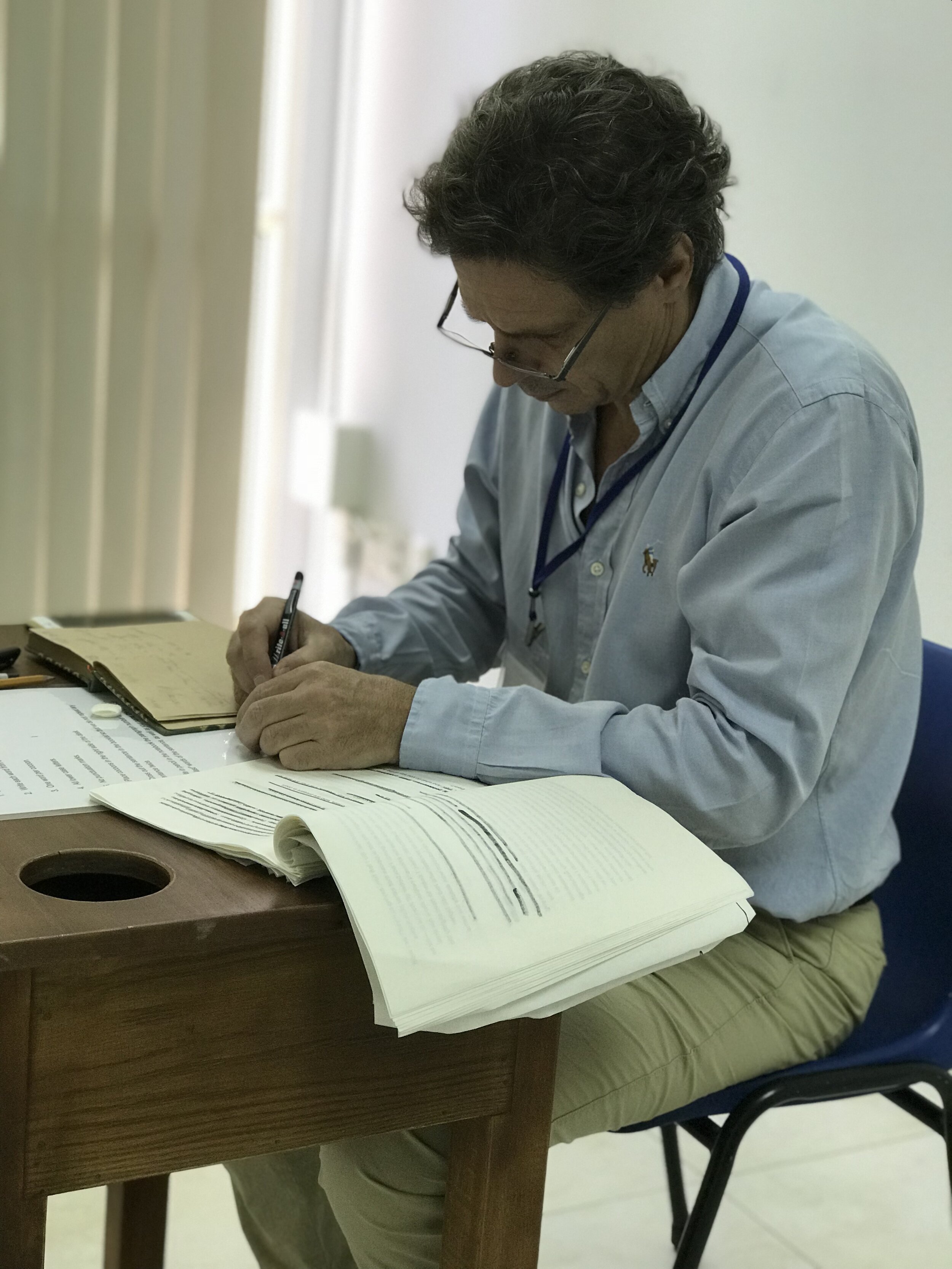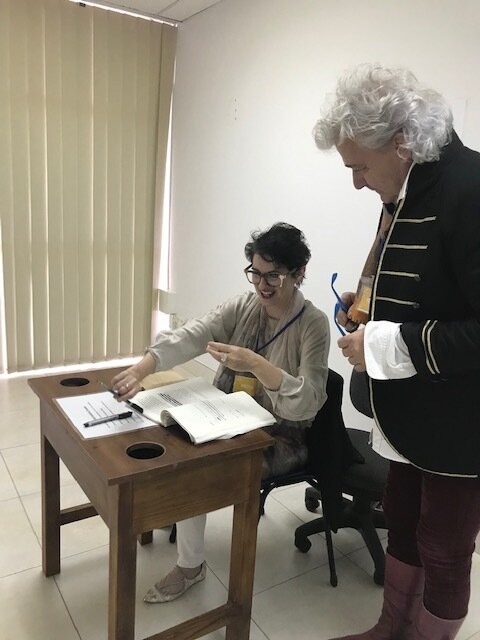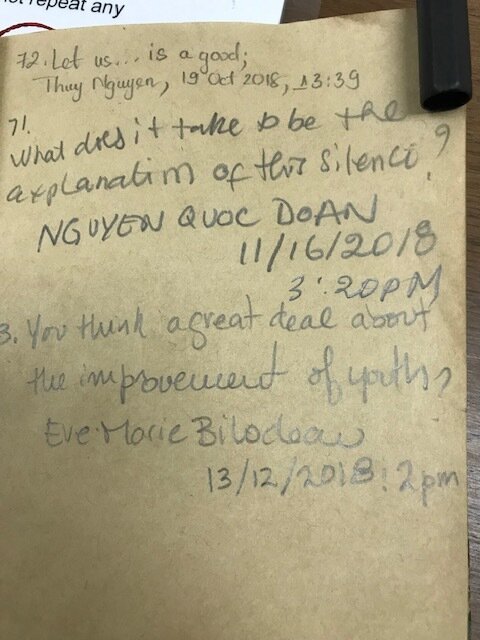socrates’ apology
silk cocoon projects
2018-ongoing
installation
marker on silk cocoon, wood and plexiglass box, vintage school desk, copy of Socrates’ Apology, notebook and pen.
Apology - Socrates
commissioned work by Nguyen Foundation of Art at Renaissance International School
“Socrates is perhaps the greatest teacher in the history of the Western world. He wandered around Athens engaging in dialogues with his fellow citizens that focused on discovering the truth of all things. He taught his pupils that the “unexamined life is not worth living.”
The Athenians saw Socrates as a threat, especially to the Athenian youth. Socrates acquired quite a following among the young men of Athens. He taught these impressionable minds to question everything, even Athenian authority. Eventually, Socrates was arrested and put on trial for corrupting the youth, not believing the gods, and creating new deities.
The “Apology” is Socrates’ defense to these charges. Instead of crying and pleading for mercy, Socrates accepts his charges and attempts to persuade the jury with reason. He argued that it was his calling from the gods to seek knowledge and that it was through his questions he uncovered truth. To not fulfill his calling would be blasphemy. In the end, Socrates lost and was sentenced to death by hemlock. Socrates accepted this fate willingly and without grudge against his condemners, thus dying as a martyr for free thinking.”
source: http://www.artofmanliness.com/2008/08/01/the-35-greatest-speeches-in-history/
to download full text: http://www.gutenberg.org/files/1656/1656-h/1656-h.htm
installation (will be installed under the supervision of artist):
in one small room
one empty wooden frame plexi glass box (dimension 70 x 230 x 12cm) mounted on the wall
a Vietnamese old style primary school desk which the top can be lift up and find a storage
white silk cocoons are found inside under the desk
on top of the desk will be the Socrate’s text printed out (this print is the only one)
one notebook
pencils and markers
one student chair
note: this work will be participated by students over twelve years old or under the supervision of one adult

